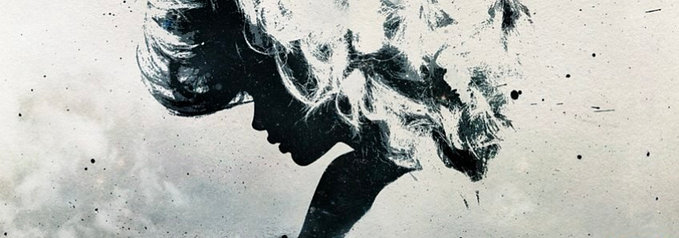“BuT i HaD gOoD inTeNioNs”
Everyone has “good” intentions. Bad intentions barely exist. Delusions, it must be said, are everywhere.
Our moral framework is hot garbage. It’s summarised by the many versions we have all heard of this story:
An innocent walks through the forest, picking berries for her evening’s modest feast. They’re probably wearing a bonnet. Some kind of family waits at home, nesting, safe. Here in the forest however, a monster lurks. He/it is baleful. The beast moves upon the vulnerable innocent. The monster dissembles, luring the innocent to greater and greater danger…
*cue dramatic tension* as our conviction grows: a monster versus an angel, bad vs sweet. Evil and holiness. The devil and the angel. The devil is so cartoonishly wicked that it must know it’s a monster. It must know, right? This story makes us stupider and stupider. People who do “very bad things” rarely consider themselves villains. They think they’re righteous.

The fairytale makes common sense of a disproven lie:
“Harm begins at bad intentions”
Although it’s true that we all experience anger, brooding, and fantasise about revenge, it’s not true that an intention to harm causes many of the prolific harms in the world we inhabit.
The stabby weirdo in the park is not likely to get us. It’s our spouse. The balaclava’d pervert in an allyway won’t assault us. Our friend will. The “terrorist” is unlikely to kill us or take our freedoms away without trial. The cops or the shrinks are. No. Not at all. They had good intentions.
When we get hurt by an error, assuming we want to heal the wound, we must resist the urge to paint our antagonist wicked. When we explain harms with ill-will, we impugn and foreclosing healing. Worse than that, we miss the structural causes of harm, thereby missing the lesson. Then we are liable, nay guaranteed, to reproduce the violence ourselves. To evade this hypnotic folly, we need to know their violence was a script they didn’t write. If we see them as a monster, how can we repair with them? Why would we even bother?
And what about them? What do they need now? If they want to heal with us, they’ll have to trust we’re seeking repair, not revenge. How else can they practice the healing of accountability?
Late-stage racial capitalism is a serpent. We will have to become more savvy than we’ve been to overcome it. That means looking where we’ve been unwilling to look — at our darkness, our shadows. Harms.
___________________________________________
I have only now, after 46 years, specified better heuristics of harm. I describe those tools below with examples from my own life, and from recent political stories. These are 5 ways that we (“the innocent”) become “the monster”. At the same time, they are 5 ways that others harm us without intending to.
1 — Misreading another’s needs
With the best of intentions, we are all capable of aggressively attending to someone else’s imagined needs. The more we wish to love them, and the less we understand what they need, the more likely we are to harm people in this way. My parents aimed for the “best education possible for me”, and in so doing, sent me to a toffee-nosed, all-boys private school. The school’s trade in misogyny and neurotypical normativity harmed everybody there and harmed me particularly because I am an Autistic woman. My parents were steeped in the capitalist aspirations of white professionalism during the 80s and knew nothing of these harms, and even less that I was particularly vulnerable to them. They knew nothing of my Autism (well, they busied themselves trying not to admit it) nor my gender (again, trying not to “notice” it because a masked trans person in 1980 was safest kind). They misfired because they misread my needs, not because they had bad intentions. This was an easy one.
2 — Ideological blindness (or bad scripts)
We can and do apply frameworks hierarchically. Rreligious beliefs might supersede concern for a loved-one’s safety, for example. A devout Christian I know was so invested in her marriage’s sanctity that she resisted leaving her violent husband, even after he bashed her and her beloved infant to near death. Although there’s much at play in that disaster, my friend’s commitment to an idea led her conscious decision to stay. You don’t have to believe in a sky-god to justify domestic violence. You can do it via the market-god: Gary Becker, a conservative economist, so loved that same family structure and the web of economic power relations it underpinned, that he proposed the theory that each such household contains an “altruistic dictator” (a man) who divvies up resources and tasks with maximum efficiency, and with ideal care for family members. Becker’s word choice (“altruistic”) calls to mind our original problematic — “but I had good intentions”. He got a Nobel prize for that body of work. And it shouldn’t need to be said, religious and social conservatives aren’t the only ones who pull this trick. Germaine Greer and JK Rowling are just two of many “feminists” who’s feminism turns spitefully misogynistic when it comes to trans women.
3 — Trauma and reactivity
When our environment triggers a traumatic memory, and we respond to the memory, not to the current scene, we’re at risk of hurting people unintentionally (there’s a pattern here). When someone expresses doubt while I report my experience, for example, I tend to flashback to the years when this was done to me routinely. I feel small, powerless, and scared. If I’m not aware of what’s happening in my body, I will often, without intending to harm, deliver scowling derision at the doubter. Scowling derision is my version of reactive violence. Some people get shouty. Some get punchy. Some withdraw. Everybody’s reactions are their own, and their triggers are their own, but they are similar in one respect — they are unintended harm. It’s important to note that even if someone’s reactivity is as unmistakably “intentional” as physical violence, the need they are meeting is not the need for harm to others. No such “need” exists. Harm is the strategy. The underlying need is (most probably) their need for safety, and the present scene is being mistaken for an historical trauma where they were unsafe.
4 — Constraints (external and internal pressures)
Some constraints come from the outside — poverty, coercion, or violence (or disability, as it turns out) budget my care for others. If I lose a job, my housemates might have to spring for my rent and groceries. If I’m arrested and incarcerated, I can’t very well support my loved ones. These are external pressures. Not all constraints come from the outside. Internal pressures, like hunger, anger and fear, lead us to inadvertent harm just as easily. If I’m overwhelmed with rage, hunger, or terror, I can’t attend to those who need me. Some pressures seem to come from inside and outside at once: When I’m late for a scheduled gathering, for example, am I overwhelmed by the pressure of the external clock, or by my internal time-blindness?
5 — Skillset failures
Sometimes we can see what someone needs, we’re unhindered by ideology, unpressured by internal and external forces, present in the moment, and we still can’t get it right! If your friend has been bitten by a venomous snake, for example, you might know that you need to help prevent the venom from reaching their heart, but do you know how? Does the tourniquet go above, below, or right on the bite? How tight should it be? Do you elevate the limb? When you get this wrong, you can make things worse. This situation is a simple one, and the skillset required is clear, but more complex examples of this are everywhere. Your colleague is having a panic attack. What do you know about helping out with that? If you don’t know much, and you try anyway, you might boost their distress. Your child is being bullied and you’re married to tough guy. They wan t to help and in trying to do so they train your kid to react with violence. If they never learned how to address this kind of harm without further harm, this is a skillset failure above all else.
It’s not always clear that just one of these difficulties is at play. A response to someone’s snake bite can be uninformed, a response to ptsd, and ideologically punitive all at the same time. These heuristics are useful ideas, not equations.
I recently argued that nobody invents violence. Rather, when we harm people avoidably, we are either re-perpetrating unhealed trauma or conveying cultural norms. And the difference between those two is like the difference between the personal and the political — it’s just scale. Normativity gives rise to trauma at scale. The humans who execute it (spoiler alert, that’s all of us) are vectors, not inventors.
“But I had good intentions” is a refrain that tells us much more about our shitty moral framework than it tells us about the the culpability of the speaker. We have swallowed whole the myth of monsters and angels. Specifically, we have taken way too seriously the power of intentions. The birthplace of harm is rich with bad guesses, ideologies, trauma, pressure, skillset shortfalls. Most importantly, if we want to repair harms rather than reproduce them, we need to notice that people are imperfect at their best, and at their worst sometimes craven or selfish, but almost never maleficient.







